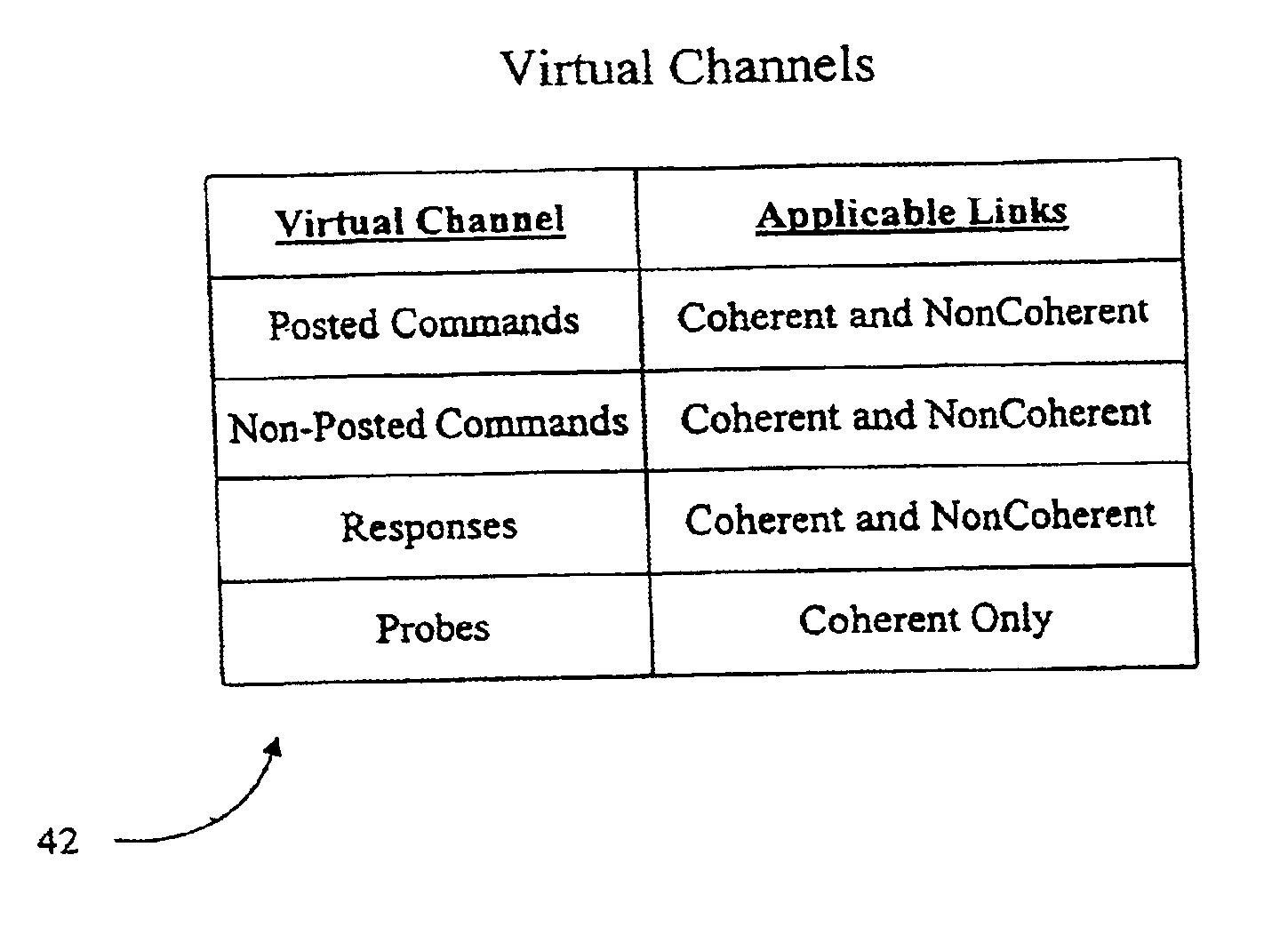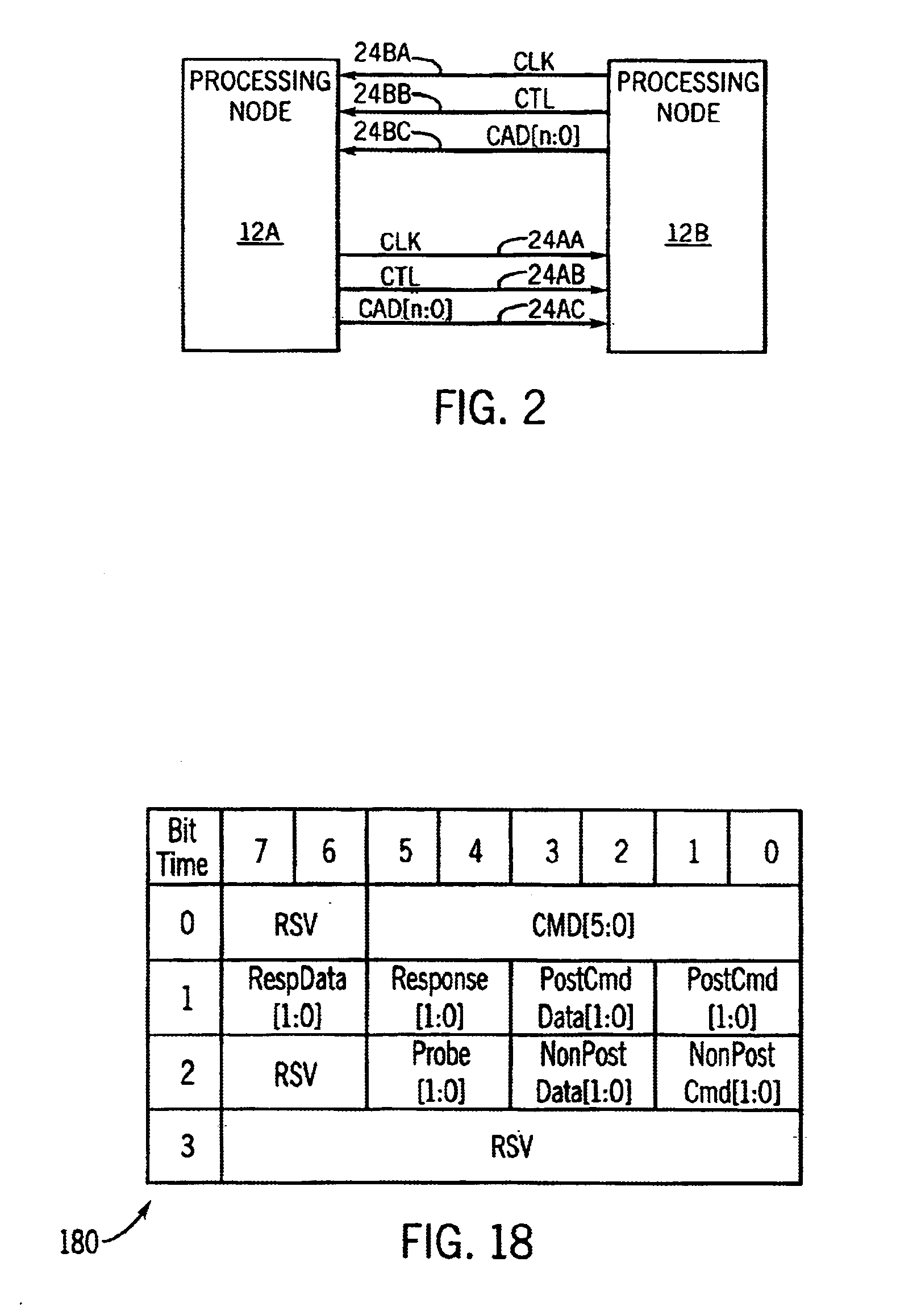System and method for implementing a separate virtual channel for posted requests in a multiprocessor computer system
a computer system and multiprocessor technology, applied in the field of computer systems, can solve the problems of reducing signal bandwidth, reducing signal integrity, and sharing bus systems suffering from several drawbacks, and achieve the effect of avoiding certain deadlocks and operating without deadlocks
- Summary
- Abstract
- Description
- Claims
- Application Information
AI Technical Summary
Benefits of technology
Problems solved by technology
Method used
Image
Examples
Embodiment Construction
System Overview
[0046]Turning now to FIG. 1, one embodiment of a computer system 10 is shown. Other embodiments of computer system 10 are possible and contemplated. In the embodiment of FIG. 1, computer system 10 includes several processing nodes 12A, 12B, 12C, and 12D, although more or fewer processing nodes may be used. Each processing node is coupled to a respective memory 14A-14D via a memory controller 16A-16D included within each respective processing node 12A-12D. A memory address space of computer system 10 is assigned across memories 14A-14D such that system 10 has a distributed memory system. Additionally, processing nodes 12A-12D include interface logic used to communicate between the processing nodes 12A-12D. For example, processing node 12A includes interface logic 18A for communicating with processing node 12B, interface logic 18B for communicating with processing node 12C, and a third interface logic 18C for communicating with yet another processing node (not shown). S...
PUM
 Login to View More
Login to View More Abstract
Description
Claims
Application Information
 Login to View More
Login to View More - R&D
- Intellectual Property
- Life Sciences
- Materials
- Tech Scout
- Unparalleled Data Quality
- Higher Quality Content
- 60% Fewer Hallucinations
Browse by: Latest US Patents, China's latest patents, Technical Efficacy Thesaurus, Application Domain, Technology Topic, Popular Technical Reports.
© 2025 PatSnap. All rights reserved.Legal|Privacy policy|Modern Slavery Act Transparency Statement|Sitemap|About US| Contact US: help@patsnap.com



